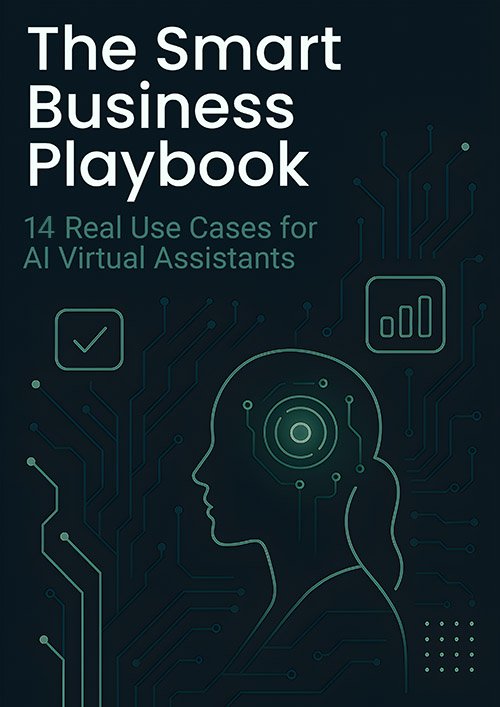Following virtual onboarding best practices guarantees your new hires feel connected, valued, and productive from day one. Implementing robust onboarding programs can make the shift smooth, enhancing engagement and satisfaction by up to 60%. Open communication channels and structured team activities foster relationships and trust. Clearly defined goals align new employees with organizational objectives, boosting retention. Utilizing technology streamlines onboarding, supports continuous learning, and enhances efficiency. Discover the practices that create successful onboarding programs.
Key Takeaways
- Best practices ensure a seamless transition, reducing time to productivity by up to 60% with effective virtual onboarding programs.
- They foster employee engagement and satisfaction, enhancing communication and aligning goals with organizational objectives.
- Structured onboarding processes promote strong relationships, increasing team cohesion and collaboration through activities and open communication.
- They provide continuous learning opportunities, supporting employee development and retention with flexible, self-directed training resources.
- Utilizing technology in onboarding streamlines processes, enhances efficiency, and offers real-time feedback for data-driven improvements.
Enhancing Employee Engagement From Day One

From the moment new hires join your organization, it's vital to engage them effectively to guarantee a seamless change and foster long-term satisfaction.
Implementing a robust virtual onboarding program is important. By utilizing structured onboarding processes, including virtual team introductions and role-specific training, you can enhance employee engagement and reduce time to productivity by up to 60%.
Incorporate learning management systems to provide continuous learning opportunities while regular check-ins during the first 30, 60, and 90 days will mitigate feelings of isolation in remote work settings.
These practices not only improve the virtual onboarding experience but also contribute to higher employee retention rates.
Enhance communication using digital tools to make sure new hires feel valued and connected from day one.
Building Strong Relationships and Team Cohesion
To build strong relationships and team cohesion during virtual onboarding, it's crucial to implement structured team bonding activities that encourage interaction and collaboration.
Establish open communication channels to guarantee new hires feel connected and supported, fostering an inclusive work environment.
Virtual Team Bonding Activities
Although virtual work environments present unique challenges, implementing effective virtual team bonding activities is vital for fostering strong relationships and team cohesion.
These activities, such as online games and collaborative projects, boost employee engagement by 35%, enhancing collaboration among remote teams.
Regular virtual coffee breaks or happy hours can greatly increase team cohesion, as social interactions are key to building trust.
Engaging in online team-building exercises leads to a 50% rise in employee satisfaction by promoting informal interactions and reducing feelings of isolation.
Virtual icebreakers during meetings are essential for new hires, helping them feel welcomed and integrated.
Consistent virtual team bonding initiatives can improve overall team performance by 20%, creating a sense of belonging and shared purpose among team members.
Encouraging Open Communication Channels
Building a cohesive virtual team goes beyond just bonding activities; encouraging open communication channels is equally important. By fostering an environment of trust and support, you enable new hires to comfortably seek help and ask questions.
Utilize communication tools like email, chat, and project management platforms to connect seamlessly with colleagues. Regular team meetings and check-ins promote interaction and collaboration, helping new hires integrate smoothly and enhancing their sense of belonging.
Implement an onboarding buddy system, pairing new hires with experienced employees, to guide and build relationships. Encourage team members to proactively welcome new hires, boosting job satisfaction and retention rates.
Open communication is a cornerstone of a supportive, collaborative team culture that drives success.
Fostering Inclusive Work Environment
Creating an inclusive work environment during virtual onboarding directly enhances employee engagement, as nearly half of job seekers prioritize company culture when evaluating opportunities.
You can foster a sense of belonging among remote employees by organizing online team-building activities that promote team cohesion. Assigning mentors to new hires is vital for relationship-building, offering guidance and smoother integration into the company culture.
Virtual welcome lunches or informal meet-and-greets are effective for encouraging interactions and support from the outset. Maintaining open communication is fundamental; regular follow-up check-ins at 30, 60, and 90 days post-onboarding can address concerns and reinforce team connections.
Implementing these strategies guarantees your virtual onboarding process effectively supports both individual and collective growth within the organization.
Ensuring a Smooth Transition to the New Role

To guarantee a smooth shift for new hires, start by equipping them with digital preboarding kits and shipping necessary equipment in advance to eliminate first-day hurdles.
Pair them with onboarding buddies or mentors to foster immediate team connections and provide essential guidance.
Additionally, organize online meetings and role-specific training sessions to clarify expectations and integrate them seamlessly into the company's culture.
Equip New Hires Efficiently
When it comes to equipping new hires efficiently, anticipating their hardware and software needs is vital to minimizing onboarding delays.
Begin by guaranteeing necessary equipment, like laptops, is ordered and configured before their start date. Implement a centralized self-service portal to let new hires request tools and track order status, thereby streamlining the onboarding process.
Automated workflows for hardware provisioning guarantee timely delivery, minimizing downtime and allowing hires to contribute effectively from day one. Access to IT support is significant, addressing technical issues swiftly and reducing frustration.
Establish clear communication channels before onboarding begins to enhance readiness. These steps are fundamental in efficiently equipping new hires, guaranteeing a seamless shift and a productive start in their new role.
Foster Team Connections
Although virtual onboarding presents unique challenges, fostering team connections is essential for ensuring a smooth shift to a new role. Start by organizing online meetings on day one to help new hires establish relationships and feel welcomed into the company culture. Assigning a mentor or buddy provides vital support, fostering a sense of belonging and easing integration. Role-specific training sessions clarify responsibilities and boost confidence. Engage in team-building activities, like virtual lunches, to strengthen connections and promote camaraderie. Regular check-ins identify challenges early, allowing for timely support and adjustments. By integrating these practices, you'll create a supportive environment that nurtures strong team bonds.
| Strategy | Benefit |
|---|---|
| Online meetings | Establish relationships |
| Mentor or buddy | Provide guidance and support |
| Team-building activities | Foster connections and belonging |
| Regular check-ins | Address challenges and provide aid |
Aligning Expectations and Performance Goals
Clearly defined performance goals are essential in virtual onboarding, guaranteeing that new hires grasp their responsibilities from the outset. Aligning expectations with organizational objectives boosts employee satisfaction and engagement, integral to successful onboarding processes.
Effective communication of these goals leads to a 70% increase in satisfaction and a 30% improvement in performance within the first 90 days.
To enhance job retention and reduce turnover, consider these strategies:
- Regular Communication: Establish consistent channels for discussing and revisiting performance goals.
- Personalized Goal Setting: Engage new hires by involving them in setting their performance targets, fostering a higher retention rate.
- Clear Metrics: Provide a thorough overview of expected outcomes, cutting down time-to-productivity by 25%.
Implementing these practices guarantees a seamless change and aligns with long-term organizational success.
Supporting Continuous Learning and Development

To optimize virtual onboarding, integrating continuous learning and development is essential. By supporting continuous learning, you can greatly boost employee retention, with potential increases of 30-50%.
When employees feel engaged and valued through growth opportunities, they're more likely to stay. Investing in employee development isn't just beneficial for employees; it also leads to a 24% profit increase and 218% income growth per employee.
Incorporating asynchronous learning allows new hires to engage with training resources at their convenience, accommodating various learning styles. Online training and mentorship facilitate skill acquisition, enhancing career progression and team versatility.
Companies with strong learning programs report a 10% rise in employee engagement, creating a more motivated and productive workforce during virtual onboarding.
Leveraging Technology for Efficient Onboarding
Enhancing continuous learning and development sets a strong foundation for onboarding, but leveraging technology takes it to the next level.
In virtual onboarding, you can create an engaging experience by using a learning management system to deliver training materials and streamline onboarding. This enables new hires to access information conveniently, promoting self-directed learning.
Here's how technology can transform your onboarding process:
- Automated Workflows: Simplify tasks like paperwork completion using communication tools, reducing time to productivity.
- Real-Time Feedback: Use analytics to monitor progress and make data-driven improvements, boosting employee engagement.
- Collaboration Tools: Foster connections through virtual networking, enhancing relationships and cultural integration.
Frequently Asked Questions
How Effective Is Virtual Onboarding?
You'll find virtual onboarding effectiveness hinges on robust remote training assessment, digital engagement techniques, and seamless new hire integration. Prioritize employee retention strategies, performance tracking methods, and onboarding technology tools to enhance virtual team dynamics and address cultural adaptation challenges.
What Are the 5 C's of Effective Onboarding?
The 5 C's of effective onboarding include Compliance training, Clarity in communication strategies, Cultural integration, Connection building, and Check Back. Utilize collaborative tools, coaching sessions, and continuous feedback for career development, community engagement, and confidence boosting.
What Are the Purpose and Benefits of an Effective Onboarding Process for New Employees?
You enhance employee retention and job satisfaction through cultural integration and training effectiveness. Boost productivity, team collaboration, and employer branding by offering learning opportunities. Use performance metrics and feedback mechanisms to guarantee new hires excel in their roles.
How to Make Virtual Onboarding More Engaging?
Enhance virtual onboarding by integrating interactive activities and engaging content. Use gamification techniques, personalized experiences, and learning modules. Facilitate social integration through virtual team building and icebreaker sessions. Implement feedback mechanisms and remote mentorship for continuous growth.
Conclusion
Incorporating best practices in virtual onboarding is pivotal for perfecting processes and promoting productivity. You'll foster faster familiarity and forge firm friendships, ensuring new hires feel engaged and enthusiastic from the start. By streamlining the setup and clearly communicating career expectations, you'll nurture new talent while nurturing their growth. Embrace innovative technologies to elevate efficiency, and you'll lay the groundwork for a seamless, successful shift into the team, ultimately driving dynamic development and delivering desired outcomes.


